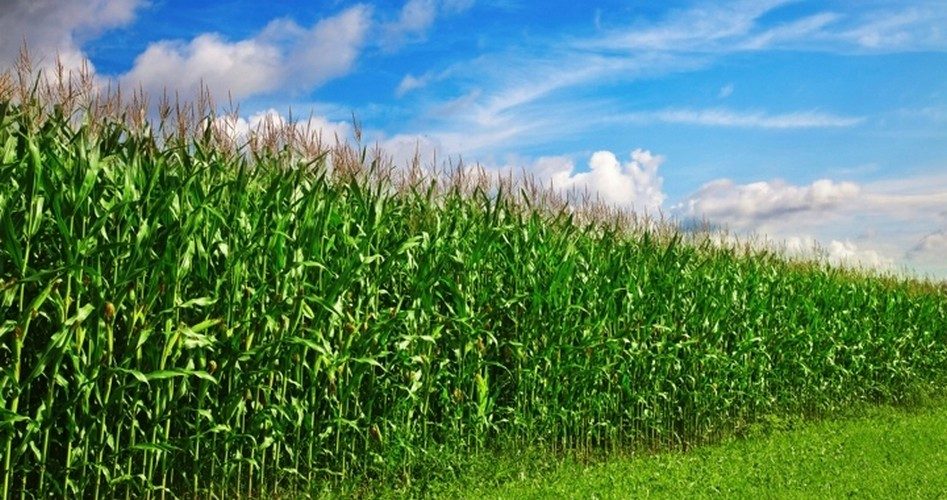
Crop insurance, as it has been traditionally understood, exists to protect farmers from catastrophic losses if the price they get for their crops at harvest is significantly lower than was expected at planting. However, through the federally subsidized Harvest Price Option (HPO) for crop insurance, farmers can actually rake in extra cash if crop prices exceed expectations, leading critics of the program to dub it the “‘Cadillac’ coverage option of federal crop insurance.”
President Barack Obama has actually proposed reducing HPO subsidies in his fiscal year 2016 budget, but a bipartisan group of lawmakers wants to go the president one better. The Harvest Price Subsidy Prohibition Act, introduced in the Senate by Senators Jeff Flake (R-Ariz.) and Jeanne Shaheen (D-N.H.) and in the House by Representative John Duncan (R-Tenn.), would do exactly as its name suggests: prohibit Uncle Sam from subsidizing HPO premiums.
“Making a living in agriculture is not easy or predictable. That’s why there are safety-net programs like traditional crop insurance,” Flake said in a press release. “But HPOs are not safety-net programs: They put taxpayers on the hook for billions of dollars even when huge profits are being made.”
The federal government, of course, has no business running any “safety-net” programs, but HPOs are particularly egregious. Unlike traditional crop insurance, HPOs pay farmers either the projected value of their crops at harvest or the actual market price at harvest, whichever is higher. In other words, farmers taking out HPOs can’t lose, especially since both their premiums and their claims are heavily subsidized by taxpayers, who got taken for an extra $6 billion when corn and soybean prices increased by 32 percent and 23 percent, respectively, during the 2012 growing season.
Such subsidies, not surprisingly, overwhelmingly benefit Big Agriculture. Lori Sanders, an analyst at the R Street Institute, a free-market think tank, wrote in the American Conservative:
In 2012, 54 percent of subsidies went to 10 percent of farms, all large businesses. Currently, the federal government pays, on average, 63 percent of producers’ crop insurance premiums, regardless of whether it is a small family farm or a large, multi-million dollar business. Twenty-six farms receive more than $1 million in premium support, while 80 percent of farms receive $5,000 or less.
With no means test and no payment limit, the subsidy encourages farmers to over-insure and lock in a profit. Additionally, unlike other farm subsidies that require USDA to publish the names of recipients, crop insurance subsidies aren’t transparent. While taxpayers who are so motivated could discover that a business that farms in 19 Florida counties received more than $1 million in premium support, it’s impossible to learn which farm received the cash.
The lack of transparency was exacerbated by the farm bill passed last year, which repealed direct cash payments to farmers while simultaneously expanding the crop insurance program. Politicians got to crow about how they were slashing farm welfare; but, as the New Republic’s David Dayen observed, “the shift from direct payments to crop insurance ensures that those handouts can be distributed in a hidden, more politically palatable way, making it more difficult to ever dislodge them.”
“Big agro businesses and insurance corporations have a sweet deal with our crop insurance,” said Duncan. “In an era of very few small farms, the largest corporate farms collect the lion’s share of the money, creating an unfair playing field for family farmers. Ninety-nine percent of the people in my district do not get subsidies from the federal government to run their businesses.”
If Duncan and his colleagues have their way, at least one of these subsidies will be plowed under. If so, it should save taxpayers almost $19 billion over the next decade, according to Congressional Budget Office projections.
However, as Dayen predicted, the surreptitious nature of the subsidies — combined with the fact that they benefit large agribusinesses with lots of clout in Washington — makes passing the Harvest Price Subsidies Prohibition Act an uphill battle. The bill was introduced only in mid-February, but already some big agricultural organizations have made their objections known.
“This is just another example of agriculture opponents trying to erode the risk management tools on which farmers depend,” read a statement from the American Association of Crop Insurers, the Crop Insurance and Reinsurance Bureau, and National Crop Insurance Services — all of which, naturally, stand to gain from the continuation of the subsidies.
While the bill has the support of a number of right-leaning groups as well as the Environmental Working Group, which opposes the subsidies because they encourage farmers to use more land than necessary, even its strongest proponents recognize the obstacles it faces.
“I don’t have super high hopes it’ll go anywhere,” Sanders told the American Conservative’s Gracy Olmstead.
“Sanders believes a lot of the Farm Bill’s cronyism is indirectly supported by Americans’ ignorance,” explained Olmstead. “People assume that support for the farm bill equals support for the local, family-run operations they consider the backbone of American agriculture. ‘Mainstream America just doesn’t know,’ she said.”
Indeed, if mainstream America only realized that, as Sanders pointed out in her own article, “America’s farms have enjoyed record profits in recent years, … and farm households now enjoy a median income that is roughly $17,000 higher than the average American,” they would probably be thoroughly outraged that they are being soaked to pad farmers’ bank accounts even further. But until they make their voices heard in Washington, Big Agriculture will continue to reap bountiful harvests where taxpayers have been forced to sow.



